
Palms by climate
Varieties suitable to plant in the garden
Contents
A vast genus, the palms are the princes of plants that spend their lives on holiday! Nearly 3000 species form the backdrop, with around fifty used in our landscapes. The gentle craze for palms took off in the 19th century, adding its charm particularly to the French Riviera. The palm, the ultimate symbol of exoticism, has now colonised other regions: these plants are not demanding, require no special care, and instantly set the scene in a garden, patio, or on a terrace. The only limiting factor for their planting is, of course, their cold resistance. This factor will guide your choice, depending on the region where you wish to plant it. We offer a selection of palms suited to different types of climates: you are sure to find one that will thrive in your home!
 Palms can be adapted to different types of climate[/caption>
Palms can be adapted to different types of climate[/caption>
Palms for the Mediterranean region
Only privileged gardens can boast of hosting species adapted to the Mediterranean climate. This region falls within USDA hardiness zone 10, characterised by very mild conditions and rare negative temperatures. You can afford to choose from the long list of available palms, including the more tender varieties. Among the tallest, note the Fan Palm Sabal mauritiiformis, with its very slender silhouette and rapid growth, reaching an impressive height of 15 to 20m. The Mexican Palm Brahea calcarea is also a fine tall specimen, growing to a height of 12m and well-suited to summer drought. Also native to Mexico, the Yucatan Fan Palm Sabal yapa will have a smaller growth, making it suitable for smaller spaces. Other palms adapted to more challenging cold conditions will also be welcome in the Mediterranean region, provided, of course, that you offer them optimal soil and exposure conditions. Not all species and varieties are necessarily equipped to withstand full sun and dry soils, two important factors to consider in your selection!

Sabal mauritiiformis
Palms for the Atlantic facade
Favoured coastal fringe benefiting from the influences of the Gulf Stream and the Atlantic Ocean, this area corresponds to the USDA hardiness zone 9. The oceanic climate experiences little seasonal contrast: winters are mild and rather humid, while summers are not extremely hot. The annual temperature range is therefore quite limited, and palms also feature in the landscape. For seaside gardens, it is essential to consider their ability to withstand sea spray, such as the dwarf palm Chamaerops humilis with its beautiful leaves resembling small fans, or the classic Canary Island date palm Phoenix canariensis with its long arching fronds. For its lovely blue hue, plant the Brahea armata or Mexican blue palm, which is undemanding, well-tolerant of sea spray, poor and even sandy soils, and drought. For a shaded spot, the bamboo palm Rhapis excelsa will also add the exotic touch you desire, provided it is sheltered from wind and sea spray.

Chamaerops humilis, Phoenix canariensis and Brahea armata
Discover other Palm trees
View all →Available in 5 sizes
Available in 1 sizes
Available in 1 sizes
Available in 1 sizes
Available in 1 sizes
Available in 4 sizes
Available in 2 sizes
Available in 1 sizes
Available in 1 sizes
Palms suitable for the north and semi-continental climate
Regions located in the North and Centre of France experience a more contrasting climate where frost periods are not particularly intense but are repeated. At these latitudes, consider the Wine Palm Butia capitata, hardy down to -12°C, which will have moderate growth, making it ideal for small spaces and pot cultivation, as well as Phoenix theophrasti, the most cold-resistant of the Phoenix, which can withstand short frosts down to -12°C when sheltered from cold winds and in well-drained soil. The dwarf palm Sabal etonia with its lovely bushy habit and multiple fan-shaped fronds will also provide a magnificent touch of exoticism, as it can endure temperatures down to -15°C.

Butia capitata and Sabal etonia
Palms suited to continental climate
Regions located in the East experience a more distinctly contrasting climate, with hot summers and cold winters. The temperature range between extremes can sometimes exceed 25 or 30°C, so the few palms capable of acclimatising must be extremely hardy and able to withstand high summer temperatures as well as harsh winter conditions. Champion of cold resistance: the Chinese palm, or Trachycarpus fortunei, which can endure negative temperatures of around -16°C to -18°C. Its growth is relatively slow, but it can reach over 8m in height: it should be planted in soil that is not too dry and sheltered from the wind for successful establishment. The miniature palm Trachycarpus wagnerianus is also a stunning, highly ornamental palm, hardy down to -18°C, ready to adapt to any soil, reaching a development of around 4m! Finally, the needle palm Rhapidophyllum hystrix is hardy down to -20°C: it should be planted in shade or partial shade, with a clear preference for fertile and constantly moist soils.

Trachycarpus fortunei, Trachycarpus wagnerianus and Rhapidophyllum hystrix
- Subscribe!
- Contents


































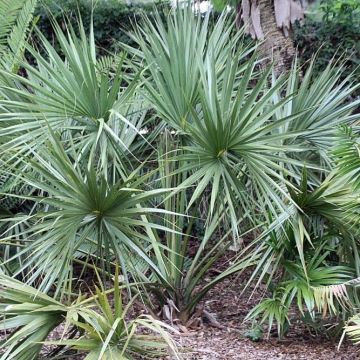

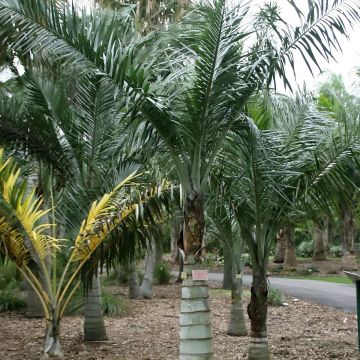

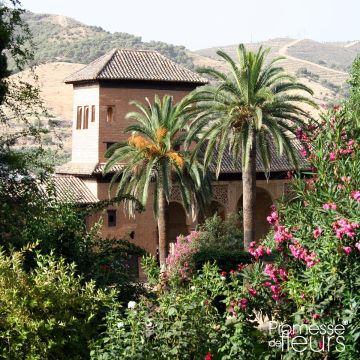
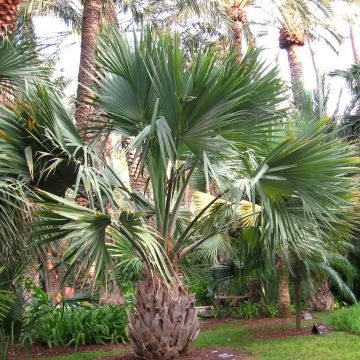

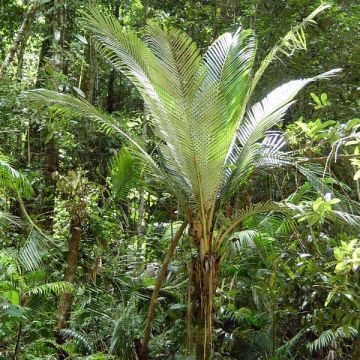
Comments